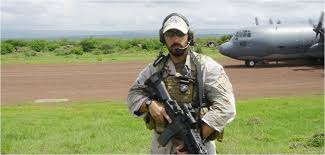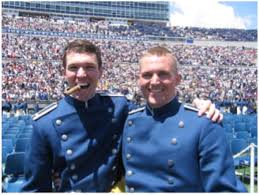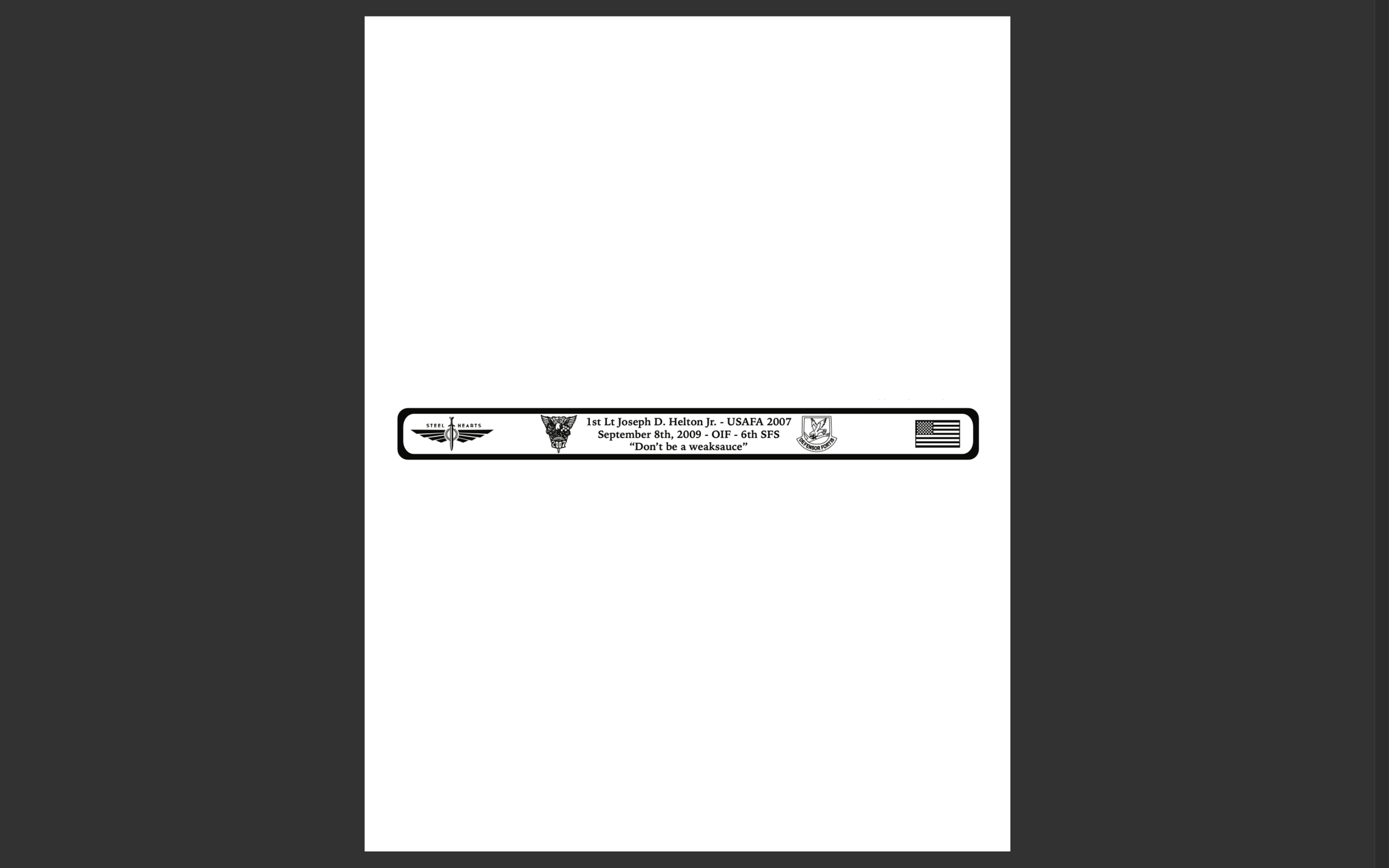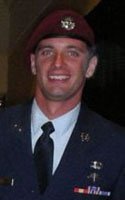 Image 1 of 3
Image 1 of 3

 Image 2 of 3
Image 2 of 3

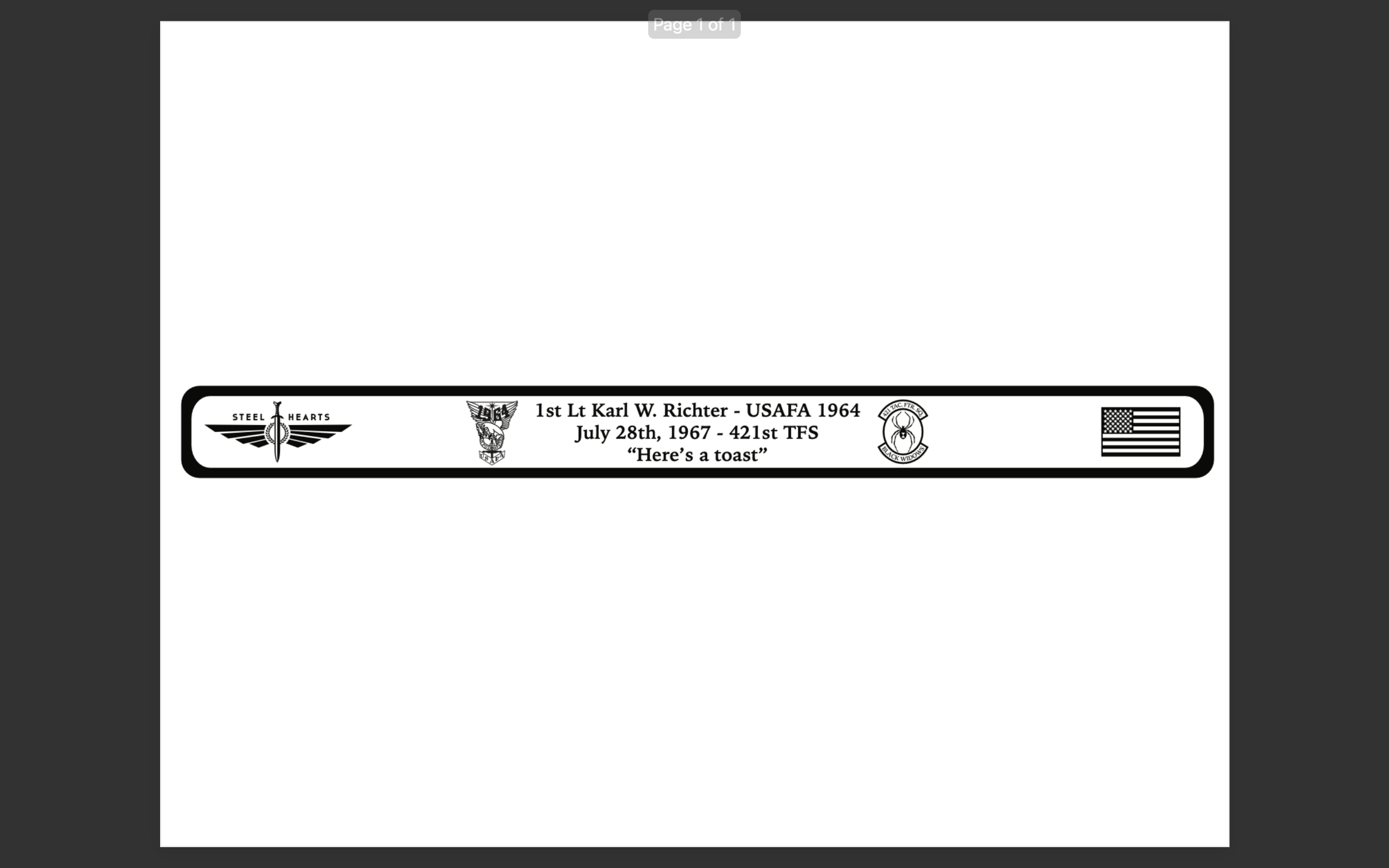 Image 3 of 3
Image 3 of 3

1st Lt Karl W. Richter (USAFA '64)
Karl Wendell Richter, born in Goodrich, MI, entered the Air Force Academy in 1960. He went on to graduate from Cadet Squadron 8 on June 3rd, 1964.
After completion of his Undergraduate Pilot Training at Craig AFB, AL, Lt Richter underwent qualification training at Nellis AFB, NV in the F-105 Thunderchief. He then ferried a replacement F-105 directly to Korat Royal Thai Air Force Base, Thailand, on 6 April 1966 where he was assigned to the 421st Tactical Fighter Squadron of the newly-designated 388th Tactical Fighter Wing. Four days later, 1st Lt Richter was flying missions over North Vietnam.
On 21 September 1966, 1st Lt Richter, now an element leader, was north of Haiphong on a mission to seek out Surface-to-Air Missile (SAM) sites. As he prepared to strike a discovered site, 1st Lt Richter saw 2 MiG-17s making a pass. Quickly assessing the situation, 1st Lt Richter began closing in on the enemy aircraft. He engaged the MiG with his 20mm cannon and impacted the enemy aircraft. Just as his gun went empty, the MiG's wing broke off and he saw the MiG pilot eject. At the age of 23, 1st Lt Richter had become the youngest American pilot to shoot down a MiG over Vietnam.
As 1st Lt Richter approached the 100-mission mark, he requested permission to fly a second 100-mission tour, believing his combat experience should be used to advance the war effort.
On 20 April 1967, 1st Lt Richter was the leader of a flight of F-105s on a mission over North Vietnam. The target, a very important railroad facility, was defended by several hundred anti-aircraft artillery emplacement and SA-2 missiles. 1st Lt Richter's mission was to destroy or limit fire from these defenses immediately before a strike on this facility by fighter bombers. Arriving over the approach to the target, 1st Lt Richter found clouds obscuring navigational references and increasing the danger from unobserved SAM launches. Despite weather conditions, 1st Lt Richter led his flight through a barrage of missiles to the target. Braving the heavy concentrated fire of the anti-aircraft artillery, 1st Lt Richter positioned his flight and attacked the defenses, causing heavy damage. As a result of 1st Lt Richter's efforts, the fighter bombers of the main strike force encountered only limited defensive fire and destroyed this vital railroad facility. 1st Lt Richter’s extraordinary heroism and superb airmanship that day earned him the U.S. Air Force's second highest award for valor, the Air Force Cross.
On 28 July 1967, 3-months after the mission that earned him the Air Force Cross, 1st Lt Richter was flying with a new pilot. When 1st Lt Richter spotted a bridge, he instructed the trainee to stay above and watch as he rolled his F-105 toward the target. 1st Lt Richter's F-105 was shot down by enemy anti-aircraft artillery and he was forced to eject over North Vietnam. Still alive when he was picked up by a rescue helicopter, 1st Lt Richter died of his wounds while en route to the hospital.
At the time of his death, 1st Lt Richter had been officially credited with flying 198 missions over North Vietnam, more than any other airman.
Here’s a toast.
Proceeds from each bracelet sold will be donated to St. Jude’s in Karl’s name.
Karl Wendell Richter, born in Goodrich, MI, entered the Air Force Academy in 1960. He went on to graduate from Cadet Squadron 8 on June 3rd, 1964.
After completion of his Undergraduate Pilot Training at Craig AFB, AL, Lt Richter underwent qualification training at Nellis AFB, NV in the F-105 Thunderchief. He then ferried a replacement F-105 directly to Korat Royal Thai Air Force Base, Thailand, on 6 April 1966 where he was assigned to the 421st Tactical Fighter Squadron of the newly-designated 388th Tactical Fighter Wing. Four days later, 1st Lt Richter was flying missions over North Vietnam.
On 21 September 1966, 1st Lt Richter, now an element leader, was north of Haiphong on a mission to seek out Surface-to-Air Missile (SAM) sites. As he prepared to strike a discovered site, 1st Lt Richter saw 2 MiG-17s making a pass. Quickly assessing the situation, 1st Lt Richter began closing in on the enemy aircraft. He engaged the MiG with his 20mm cannon and impacted the enemy aircraft. Just as his gun went empty, the MiG's wing broke off and he saw the MiG pilot eject. At the age of 23, 1st Lt Richter had become the youngest American pilot to shoot down a MiG over Vietnam.
As 1st Lt Richter approached the 100-mission mark, he requested permission to fly a second 100-mission tour, believing his combat experience should be used to advance the war effort.
On 20 April 1967, 1st Lt Richter was the leader of a flight of F-105s on a mission over North Vietnam. The target, a very important railroad facility, was defended by several hundred anti-aircraft artillery emplacement and SA-2 missiles. 1st Lt Richter's mission was to destroy or limit fire from these defenses immediately before a strike on this facility by fighter bombers. Arriving over the approach to the target, 1st Lt Richter found clouds obscuring navigational references and increasing the danger from unobserved SAM launches. Despite weather conditions, 1st Lt Richter led his flight through a barrage of missiles to the target. Braving the heavy concentrated fire of the anti-aircraft artillery, 1st Lt Richter positioned his flight and attacked the defenses, causing heavy damage. As a result of 1st Lt Richter's efforts, the fighter bombers of the main strike force encountered only limited defensive fire and destroyed this vital railroad facility. 1st Lt Richter’s extraordinary heroism and superb airmanship that day earned him the U.S. Air Force's second highest award for valor, the Air Force Cross.
On 28 July 1967, 3-months after the mission that earned him the Air Force Cross, 1st Lt Richter was flying with a new pilot. When 1st Lt Richter spotted a bridge, he instructed the trainee to stay above and watch as he rolled his F-105 toward the target. 1st Lt Richter's F-105 was shot down by enemy anti-aircraft artillery and he was forced to eject over North Vietnam. Still alive when he was picked up by a rescue helicopter, 1st Lt Richter died of his wounds while en route to the hospital.
At the time of his death, 1st Lt Richter had been officially credited with flying 198 missions over North Vietnam, more than any other airman.
Here’s a toast.
Proceeds from each bracelet sold will be donated to St. Jude’s in Karl’s name.
Karl Wendell Richter, born in Goodrich, MI, entered the Air Force Academy in 1960. He went on to graduate from Cadet Squadron 8 on June 3rd, 1964.
After completion of his Undergraduate Pilot Training at Craig AFB, AL, Lt Richter underwent qualification training at Nellis AFB, NV in the F-105 Thunderchief. He then ferried a replacement F-105 directly to Korat Royal Thai Air Force Base, Thailand, on 6 April 1966 where he was assigned to the 421st Tactical Fighter Squadron of the newly-designated 388th Tactical Fighter Wing. Four days later, 1st Lt Richter was flying missions over North Vietnam.
On 21 September 1966, 1st Lt Richter, now an element leader, was north of Haiphong on a mission to seek out Surface-to-Air Missile (SAM) sites. As he prepared to strike a discovered site, 1st Lt Richter saw 2 MiG-17s making a pass. Quickly assessing the situation, 1st Lt Richter began closing in on the enemy aircraft. He engaged the MiG with his 20mm cannon and impacted the enemy aircraft. Just as his gun went empty, the MiG's wing broke off and he saw the MiG pilot eject. At the age of 23, 1st Lt Richter had become the youngest American pilot to shoot down a MiG over Vietnam.
As 1st Lt Richter approached the 100-mission mark, he requested permission to fly a second 100-mission tour, believing his combat experience should be used to advance the war effort.
On 20 April 1967, 1st Lt Richter was the leader of a flight of F-105s on a mission over North Vietnam. The target, a very important railroad facility, was defended by several hundred anti-aircraft artillery emplacement and SA-2 missiles. 1st Lt Richter's mission was to destroy or limit fire from these defenses immediately before a strike on this facility by fighter bombers. Arriving over the approach to the target, 1st Lt Richter found clouds obscuring navigational references and increasing the danger from unobserved SAM launches. Despite weather conditions, 1st Lt Richter led his flight through a barrage of missiles to the target. Braving the heavy concentrated fire of the anti-aircraft artillery, 1st Lt Richter positioned his flight and attacked the defenses, causing heavy damage. As a result of 1st Lt Richter's efforts, the fighter bombers of the main strike force encountered only limited defensive fire and destroyed this vital railroad facility. 1st Lt Richter’s extraordinary heroism and superb airmanship that day earned him the U.S. Air Force's second highest award for valor, the Air Force Cross.
On 28 July 1967, 3-months after the mission that earned him the Air Force Cross, 1st Lt Richter was flying with a new pilot. When 1st Lt Richter spotted a bridge, he instructed the trainee to stay above and watch as he rolled his F-105 toward the target. 1st Lt Richter's F-105 was shot down by enemy anti-aircraft artillery and he was forced to eject over North Vietnam. Still alive when he was picked up by a rescue helicopter, 1st Lt Richter died of his wounds while en route to the hospital.
At the time of his death, 1st Lt Richter had been officially credited with flying 198 missions over North Vietnam, more than any other airman.
Here’s a toast.
Proceeds from each bracelet sold will be donated to St. Jude’s in Karl’s name.


